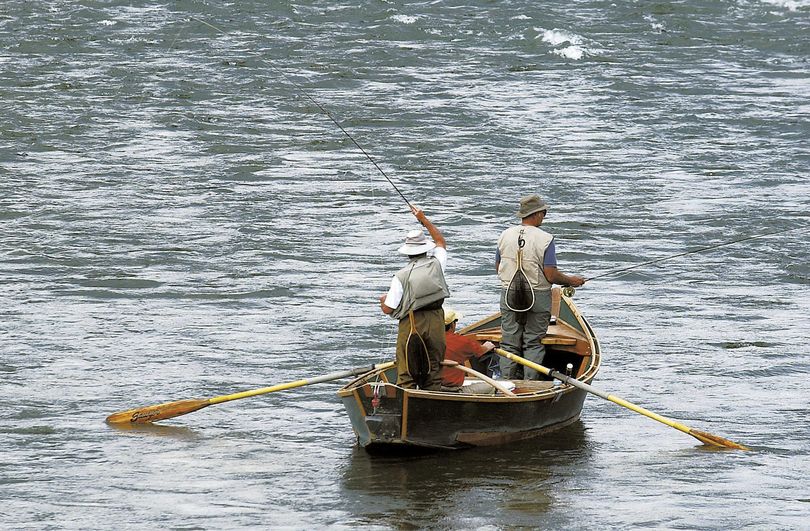Montana reopens stretches of Yellowstone River

WATERSPORTS -- Restrictions were lifted today on two sections of the Yellowstone River as environmental conditions have improved since the state of Montana closed 183 miles of the river and tributaries on Aug. 19.
Fishing is still closed on some portions of the restricted area downstream from Yellowstone National Park.
The unprecedented closure was prompted by discovery of a parasite that's been killing thousands of fish.
Guiding businesses have been hurt by the problem.
Montana Fish, Wildlife & Parks reviewed sampling data collected an then:
- Opened an upper section of the Yellowstone to non-angling recreation only;
- Opened the other section below Livingston completely to recreation.
- Continued the complete closure of the mainstem of the Yellowstone River through much of Paradise Valley south of Livingston.
Gov. Steve Bullock supported opening parts of the Yellowstone River and acknowledged the implications of the decision to the local economy.
“I join Montanans in being encouraged by this first step, but we’re not out of the woods yet and we must ensure that we are safeguarding Montana jobs while keeping this threat at bay,” Bullock said. “A threat to the health of Montana’s fish populations is a threat to Montana’s entire outdoor economy and the tens of thousands of jobs it sustains, and I want to thank all Montanans and visitors for their ongoing support as we work to protect and preserve the health and economic benefit of the Yellowstone River for this and future generations."
The details of the decision are as follows:
Section 1
The Yellowstone River and all of its tributaries from the northern boundary of Yellowstone National Park in Gardiner, downstream to the Carbella Fishing Access Site, which is operated by the Bureau of Land Management, are open to all non-angling recreational uses. Angling remains closed in this section to protect the Yellowstone cutthroat trout fishery. On Sept. 6, department biologists will float this section to assess any change in fishery health during this period of non-angling recreational use. In the event this section does not show any detrimental change in fishery health, it will be open immediately to all uses that day.
Section 2
The mainstem Yellowstone River from the Carbella BLM Fishing Access Site downstream to the Highway 89 Bridge Fishing Access Site near Livingston, remains closed to all public occupation and recreation per the original Aug. 19 closure. However, all Yellowstone River tributaries in this section, including Armstrong, Depuy’s, and Nelson’s Spring Creeks, are open to all uses.
Section 3
The Yellowstone River and all of its tributaries downstream from the Highway 89 Bridge Fishing Access Site to the Highway 212 bridge in Laurel are open to all uses, with the exception of the Shields River and all of its tributaries, which remain closed to all public occupation and recreation per the original Aug. 19 closure in order to protect the Yellowstone cutthroat trout fishery. The mainstem Yellowstone River and all tributaries downstream from the Highway 212 bridge in Laurel were never part of a closure, and remain open to all uses.
See more info here.
The fight against aquatic invasives – Clean. Drain. Dry.
The fish kill on the Yellowstone River highlights the importance of the battle against aquatic invasive species. It is important that all recreationists understand the role they play in preventing the introduction and spread of aquatic invasive species and other harmful organisms.
Here's more from Montana Fish Wildlife & Parks:
As part of the re-opening of parts of the Yellowstone to recreation, FWP is also placing two AIS inspection stations on the Interstate 90 corridor near Livingston and Hardin. All watercraft must stop at AIS inspection stations. This includes rafts, float tubes, kayaks and stand up paddle boards, along with motorized watercraft.
The key to protecting Montana’s waters from AIS is captured in the mantra: Clean, Drain, Dry. So, after visiting any water body, follow these steps:
Clean: Scrub all gear and equipment including waders, anchors, nets, etc. If the item is fibrous (i.e. rope or felt-soled waders) use water and a scrub brush. Make sure to use clean water and remove all dirt and mud.
Drain: Simply drain all compartments – bilge, live well, coolers, rafts, etc.
Dry: Aquatic invaders can survive only in water and wet areas, so plan your activity with dry time as a consideration
Make clean, drain and dry a habit, just like packing a cooler or protecting your fly rod for the trip home.
See more details on cleaning equipment here.
